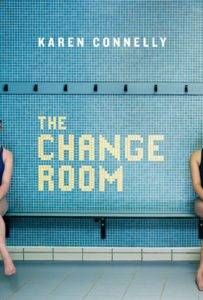
Where’s the Sex in Literary Realist Fiction?

There are two genres that have a lovely, unabashed focus on sex and/or the erotic: erotica and romance. There are also some great examples of hybrid erotic romances that combine the expectations of the romance genre—the build-up of a romantic relationship and an HEA (happily-ever-after)—with the detailed description of sexual situations that you anticipate from erotica. Chick lit can also borrow heavily from the important aspects of erotica and romance. But contemporary realist / literary fiction is not where you expect to find arousing, detailed descriptions of sex. Right?
Well that’s exactly what you get in The Change Room. After reading the first of what became many meticulously described sex scenes, I was surprised to realize that I couldn’t think of any other novels in the same genre that devoted so much space to sex in the same way that they delved into other aspects of life in minute detail. I found myself wondering just how and when and why it became the norm to fade-to-black or only briefly mention sex in literary realist fiction. The inclusion of the explicit sex in The Change Room felt very natural: it revealed so much about the characters and their relationships with each other, and it functioned as the focal point for talking about one of the themes of the novel: the omission of (sexual, sensual, erotic, or otherwise) pleasure in busy middle-class lives. Of course, this wouldn’t be true of all literary and realist novels. But it must be true for some others, whose authors or publishers have made the decision to leave out sex, either partially or in its entirety, perhaps to the detriment of the story.
It’s no coincidence that neither romance nor erotica are considered “serious” genres, and it’s worth noting that both genres have a strong association with women, as readers and as authors. Of course, genres like science fiction, fantasy, and mystery are also often not taken seriously, as if literary realism a la Carol Shields and Jonathan Franzen is the only worthwhile true “literature” (imagine that word with a posh British accent). You see this when some readers insist Margaret Atwood’s work is literary fiction not science fiction, as if labeling it sci fi would be some kind of insult. But what makes writing in detail about sex in particular somehow not literary or not realistic and therefore not part of “serious” writing?
Looking into the conventions of any genre is fascinating. And what reading The Change Room made me realize is how arbitrary the relative omission of sex in literary realism really is. As if in-depth description of any other part of life, even the most mundane, is worthier than sex. Think about how much detail you might get, for example, about the actions and words of a group of people at a dinner party in any given literary realist novel. This kind of attention to everyday life, in fact, is what some readers don’t like about literary realism. Why couldn’t you describe sex in the same way, if it’s also important to plot and character? And if sex is somehow more difficult to write about than other parts of life, why is that? Isn’t that writers’ job, to put into words those important experiences of life that are difficult to capture?
I don’t have answers to these questions, but I would love to hear from other readers if they have thoughts about this topic, and if they can think of any other literary realist novels that have lengthy, detailed sex scenes like The Change Room.














